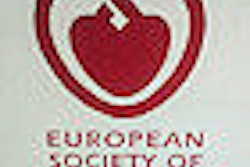Dear AuntMinnieEurope Member,
Gorillas, elephants, rhinos, and other hefty beasts seemed like an unusual topic to focus on in the special lecture at the World Federation for Ultrasound in Medicine and Biology (WFUMB) congress, held in Vienna over the past week. As it turned out, the choice of subject was inspired. Delegates loved the amazing stories about how Dr. Thomas Hildebrandt and his team have performed ultrasound examinations on a diverse range of animals.
Congress organizers sometimes overlook the art of entertainment, so it's refreshing to see WFUMB officials trying something so different. Click here to read more.
Lively, controversial debates have been the order of the day at this week's other major congress, the annual meeting of the European Society of Cardiology (ESC) in Paris. For coverage of how MRI promises to replace nuclear scans in certain key areas, click here. For a report on CT's growing challenge to diagnostic invasive coronary angiography, click here.
Radiation dose remains an Achilles' heel for CT that forces all medical doctors to think carefully before using the modality. Therefore, they will no doubt welcome the development of a new iterative reconstruction algorithm that permits the acquisition of high-quality body CT angiography images using about half the dose of filtered back projection imaging. For the full story, visit our CT Digital Community or click here.
Back at the WFUMB congress, there was plenty of discussion about hepatic imaging. Firstly, evidence was presented about how contrast-enhanced ultrasound can help to characterize liver disease. Click here for our article.
Secondly, speakers described how elastography can permit rapid assessment of liver fibrosis that seems free of adverse events, is comfortable for the patient and sonographer, and has a mean duration of around five minutes. Click here to learn more.
Don't forget to check back for further coverage from the WFUMB and ESC congresses over the next week or two.


















